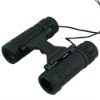- Telescope & Binoculars[6]
- Other Measuring & Analysing Instruments[10]
- Compasses[2]
- Height Measuring Instruments[2]
- Other Electrical Instruments[1]
- Gauges[2]
- Jewelry Tools & Equipment[8]
- Magnifiers[3]
- Level Measuring Instruments[1]
- Other Optics Instruments[10]
- Tape Measures[4]
- Other Hand Tools[1]
- Hammer[1]
- Pumps[1]
- Theodolites[1]
- Contact Person : Mr. Yu Talor
- Company Name : Harbin Optical Instrument Factory
- Tel : 86-451-84286338
- Fax : 86-451-84286493
- Address : Heilongjiang,harbin,N0.32,The Third Jingwei Street DaoLi District,Harbin,China.
- Country/Region : China
- Zip : 150010
BINOCULARS
Specification:
1) Model: D0821B, 8X21
2) Magnification: 8X
3) Objective diameter: 21mm
4) Field of view: 131m/1000m
5) Exit pupil diameter: 2.6mm
6) Exit pupil distance: 10mm
7) Resolution: 14 inches
8) Prism: BK7, Roof prism
9) Focus systerm: Center
10) Eyecup: Fold down
11) Minimum focal length: 3m
12) Color: Black, camo
13) Coating: Fully coated (Blue coated, green coated or ruby coated)
14) Unit size: 9.8cm x 8.8cm x 3cm
15) Unit weight: 180g
16) Waterproof/Fogproof: No
17) Material: rubber, plastic, aluminum alloy, glass
18) Magnifications of 10 x 25 are also available.
Packing Details:
1) Packing: 50PCS/CTN
2) G.W.: 13kgs
3) N.W.: 12kgs
4) Carton size: 43.5cm x 26.5cm x 24.5cm
5) Inner packing: with a soft pouch and a color box
One color logo printing is free.
How do binoculars work? Binoculars have been around for hundreds of years, allowing people to see things that are very far away with more clarity and precision than otherwise possible. The fundamental principle is the same as the one we see in eyeglasses, telescopes and other forms of vision enhancement. A binocular is, in essence, two telescopes mounted side by side in a handheld device. Both binoculars and telescopes use a series of lenses in order to gather the light from the image you are looking at and magnifying it. A major difference between binoculars and these other instruments is that fact that they are made to show images to both eyes simultaneously. This characteristic adds more depth perception to the image that is being seen. Binoculars are made up of a series of lenses, prisms and eyepieces. When you point the binoculars at an object, the first object it hits is the front lens. That lens magnifies the image and sends it to another lens. Depending on the make and model, it will generally have between two and four lenses.Each time the image is passed from lens to lens, the image is magnified even more. For that reason, the general rule is that the more lenses a pair of binoculars has, the more it is able to magnify an image. Once the image is finished being sent from lens to lens, it is sent to a prism. While the prism also magnifies the image, its main job is to flip the image. The prism then sends the image to the eyepiece, which focuses the magnification and makes it ready to be viewed by the human eye. Another important aspect of binoculars is the built-in magnification dial. This dial allows a person to adjust the magnification of the lenses to properly focus the image that is being viewed. Binoculars may have a second dial that offers additional adjustments of the eyepieces. On the outside, binoculars are almost all made of plastic. However, heavy-duty binoculars may be reinforced with metal. Binoculars are often used for sporting events, bird watching, safaris and any other time you want to get an up-close look at something in the distance.BINOCULARS






